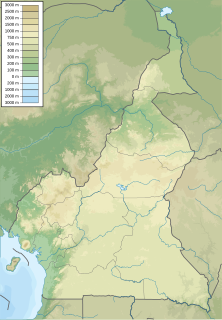
Alme is a village in the commune of Mayo-Baléoin Adamawa Region, Cameroon, near the border with Nigeria.

Anam is a village in the commune of Martap, in the Adamawa Region of Cameroon.

Hangloa is a village in the commune of Martap, in the Adamawa Region of Cameroon.

Laoukobong is a village in the commune of Martap, in the Adamawa Region of Cameroon.

Laoupanga is a village in the commune of Nyambaka in the Adamawa Region of Cameroon, located on the road from Ngaoundéré to Wouro Sangue

Lassoumti is a village in the commune of Mayo-Baléo in the Adamawa Region of Cameroon, near the border with Nigeria.

Libong is a village in the commune of Tignère in the Adamawa Region of Cameroon.

Likok is a village in the commune of Martap, in the Adamawa Region of Cameroon.

Likok-Kouba is a village in the commune of Martap, in the Adamawa Region of Cameroon.

Lompta is a village in the commune of Galim-Tignère in the Adamawa Region of Cameroon. It lies on the left bank of the Beli River.

Malombo is a village in the commune of Nyambaka in the Adamawa Region of Cameroon.

Matakoro is a village in the commune of Martap, in the Adamawa Region of Cameroon.

Mbamti-Laïnde is a village in the commune of Banyo in the Adamawa Region of Cameroon.

Mbondjanga is a village in the commune of Bankim in the Adamawa Region of Cameroon, near the border with Nigeria

Neminaka is a village in the commune of Nyambaka in the Adamawa Region of Cameroon, on the road from Ngaoundéré to Meiganga.

Ngaouyanga is a village in the commune of Mbe in the Adamawa Region of Cameroon. et le département de la Vina au Cameroun, on the road from Ngaoundéré to Mbe and Garoua.

Pawati is a village in the commune of Mayo-Baléo in the Adamawa Region of Cameroon, near the border with Nigeria.

Tongo Sarki Yayï is a village in the commune of Mayo-Baléo in the Adamawa Region of Cameroon, near the border with Nigeria.

Toumbouroum is a village in the commune of Martap, in the Adamawa Region of Cameroon. et le département de la Vina au Cameroun.

Walkossam is a village in the commune of Tignère, in the Adamawa Region of Cameroon.






